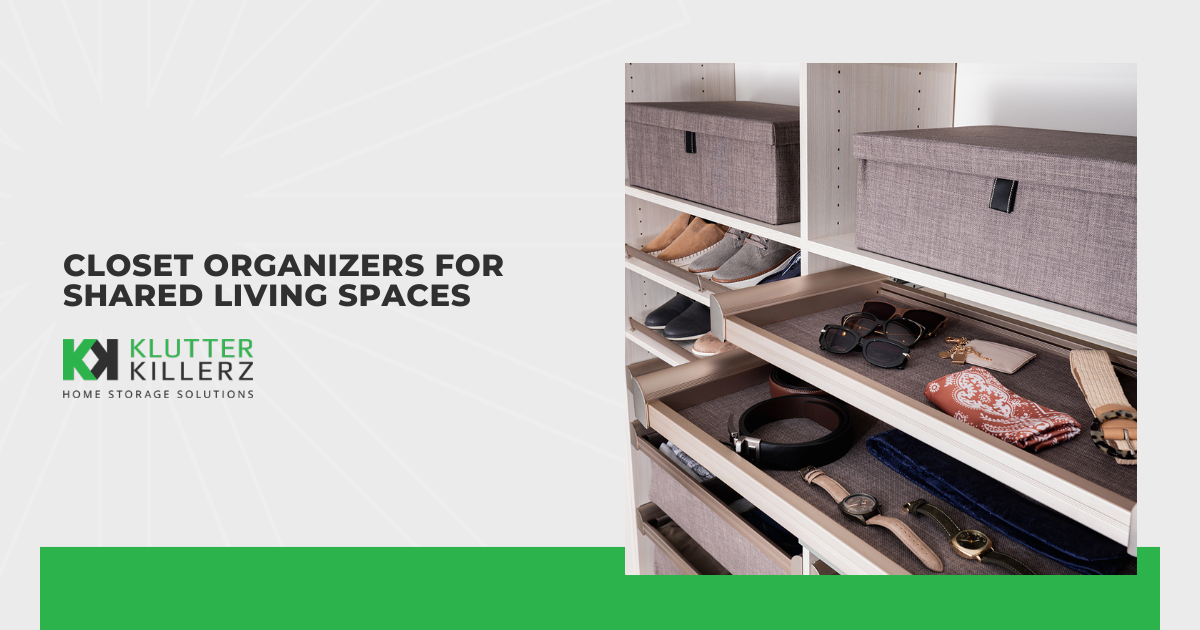
Living with others can be a wonderful experience, but it often comes with unique challenges – especially when it comes to storage space. I've seen how the right closet organizers can turn chaotic, cramped quarters into harmonious havens. Whether you're sharing space with roommates, family members, or a significant other, the struggle to keep everyone's belongings organized and accessible is real.
The key to peaceful coexistence often lies in how well we manage our shared spaces. When multiple people share a closet, the challenges multiply: limited hanging space, confused ownership of items, and the inevitable overflow that occurs when too many belongings compete for too little space. These issues can create tension and frustration in otherwise happy living situations.
- Maximizing closet space: The importance of planning
- Types of closet organizers for shared spaces
- Making use of vertical space: Shelving and hooks
- Creating personal space in a shared closet
- Maximizing drawer space for smaller items
- Utilizing closet doors for additional storage
- Maintenance and regular organizational practices
Ready to transform your shared closet from a source of stress to a model of efficiency? In this comprehensive guide, I'll walk you through everything you need to know about optimizing your shared closet space, including space planning, essential organization tools, and maintenance strategies that actually work. Let's dive in!
Maximizing Closet Space: The Importance of Planning
Before rushing to purchase storage solutions, taking time to plan your approach is crucial. Successful closet organization begins with a thorough assessment of both the available space and each person's storage needs.
Essential planning steps include:
- Measuring your entire closet space, including height, width, and depth, to understand exactly what you're working with and to ensure any organizers you purchase will fit properly.
- Taking a complete inventory of each person's belongings, categorizing items by type (hanging clothes, folded items, accessories) to determine storage needs.
- Creating a rough sketch of your ideal closet layout, marking designated areas for each person and type of storage solution.
Remember, the goal isn't just to create equal space, but to design a system that accommodates different storage needs while maintaining harmony among all users.

Types of Closet Organizers for Shared Spaces
When it comes to closet organizers, selecting the right tools can make all the difference in maximizing your shared space. Here are the most effective options I recommend:
Hanging Organizers
- Multi-pocket organizers for shoes, accessories, and folded clothes
- Cascading hangers for maximizing vertical hanging space
- Double-rod hangers to instantly double your hanging capacity
Storage Solutions
- Clear storage bins with secure lids for seasonal items
- Vacuum sealed bags for bulky clothes
- Drawer organizers with adjustable dividers for smaller items
Space-Saving Specialties
- Pull-out belt and tie racks that maximize deep corner spaces
- Over-the-door shoe organizers that can be repurposed for accessories
- Slim, non-slip hangers that maximize rod space
Making Use of Vertical Space: Shelving and Hooks
One of the most overlooked aspects of closet organization is vertical space utilization. In shared closets, making use of every available inch is crucial. Here's how to maximize your vertical space:
Upper Zone Solutions
- Install additional shelving above hanging rods for seasonal storage.
- Use shelf dividers to prevent stacked items from toppling.
- Add labeled bins for items accessed less frequently.
Wall-Mounted Options
- Install adjustable hook systems for bags and accessories.
- Add a pegboard system for flexible storage configurations.
- Mount belt and scarf organizers on empty wall spaces.
Creating Personal Space in a Shared Closet
Establishing clear boundaries within a shared closet is essential for maintaining organization and preventing conflicts. Try these proven strategies:
Visual Organization
- Use different colored hangers for each person.
- Implement labeled bins and baskets for personal items.
- Create clear dividing lines using shelf separators or tension rods.
Space Division Methods
- Assign specific shelves or sections to each person.
- Use drawer dividers for smaller personal items.
- Designate specific areas for shared items like cleaning supplies or extra hangers.
Maintenance and Regular Organizational Practices
A well-organized closet requires consistent maintenance. Here's a practical maintenance schedule:
Weekly Tasks
- Return items to their designated spaces.
- Straighten hangers and fold any disheveled items.
- Quick cleanup of any dropped items or clothing debris
Monthly Tasks
- Review and reorganize each section.
- Check for any damaged organizers that need replacement.
- Assess if the current system is working for everyone.
Seasonal Tasks
- Rotate seasonal clothing.
- Deep clean all storage containers and surfaces.
- Evaluate and adjust the organizational system as needed.
Conclusion
With thoughtful planning and the right closet organizers, shared storage spaces can become a source of harmony rather than conflict. Remember that successful organization in shared spaces requires both the right tools and ongoing commitment from everyone involved. Take time to assess your needs, implement appropriate storage solutions, and maintain open communication with your closet-mates. Whether you're sharing space with family, friends, or partners, these organizational strategies can help create a peaceful and functional living environment that works for everyone.

